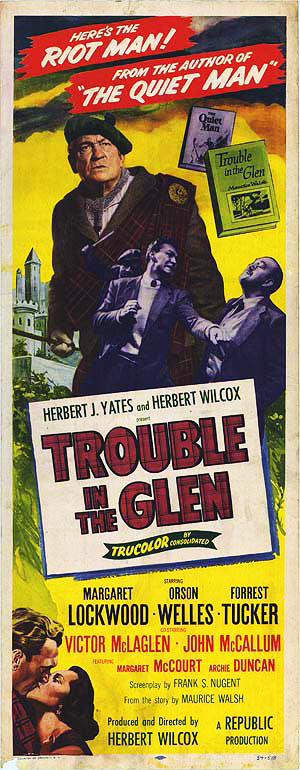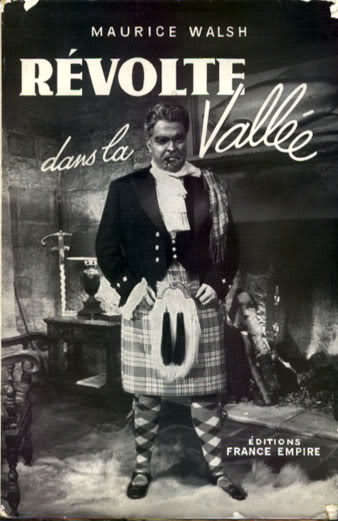ORSON WELLES AND SCOTLANDby Tom Doran Part Two Welles next came into contact with Macbeth in 1940 with an audio recording from his Mercury Players for CBS records. Featuring a great score by Bernard Hermann, it is a fair rendition of the play, with a bombastic if somewhat unsubtle performance by Welles. In 1946, Welles was a bit down on his luck - his reputation in Hollywood was terrible. He was deemed unreliable, cavalier, untrustworthy to finish anything he started. He made deals with the blustering thugs who ran some of the studios to get work when he could, but always under strict conditions that would never suit his way of doing business.. 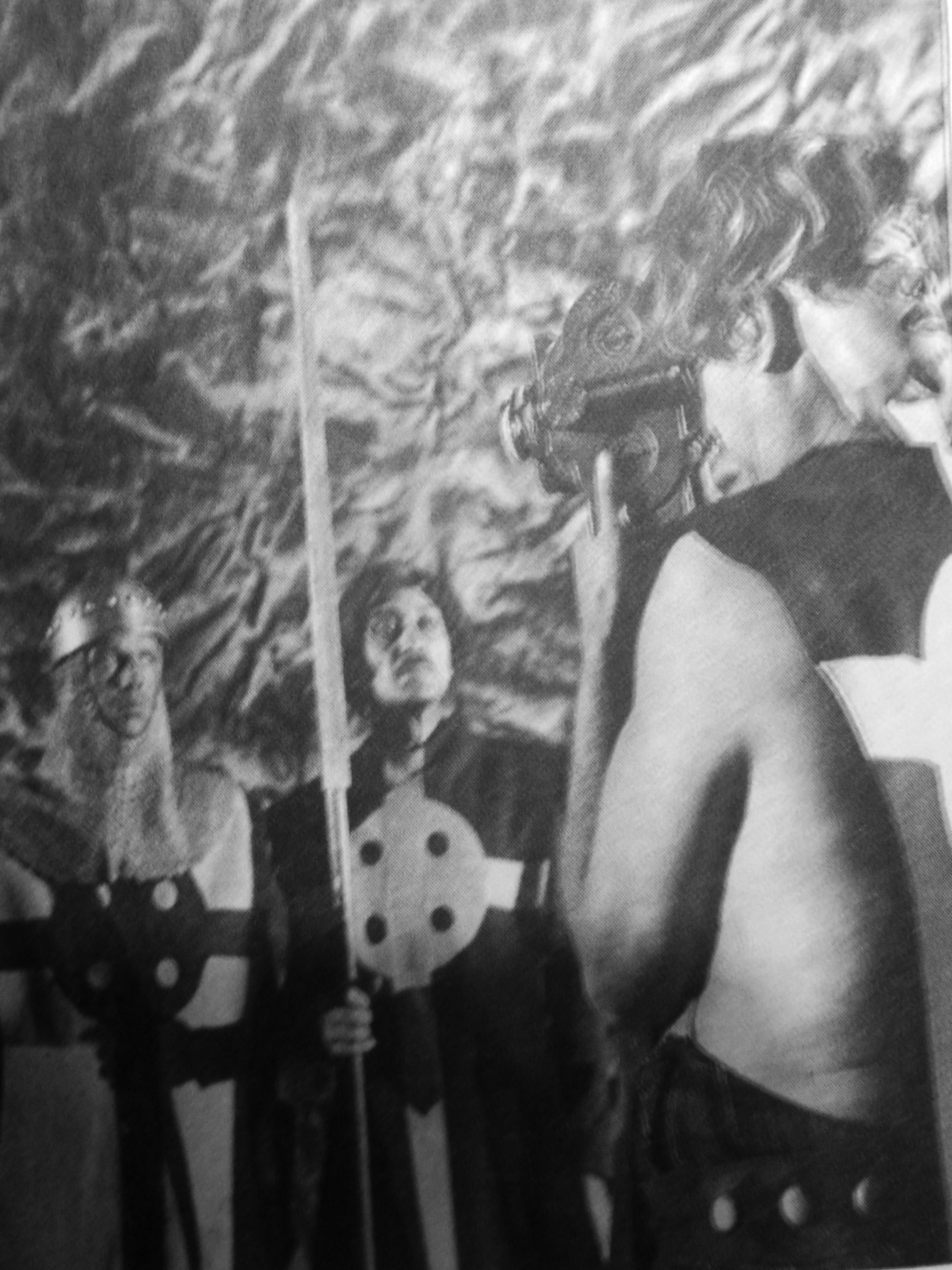 Who however should come to the rescue, but Hebert Yates - mogul of the lower budget studio Republic Pictures. Known mainly for their westerns and serials, they were a friendly studio and regardless of the subject matter of their output, had first class crews, production values and special effects teams - often unmatched by the mightier, better financed studios. 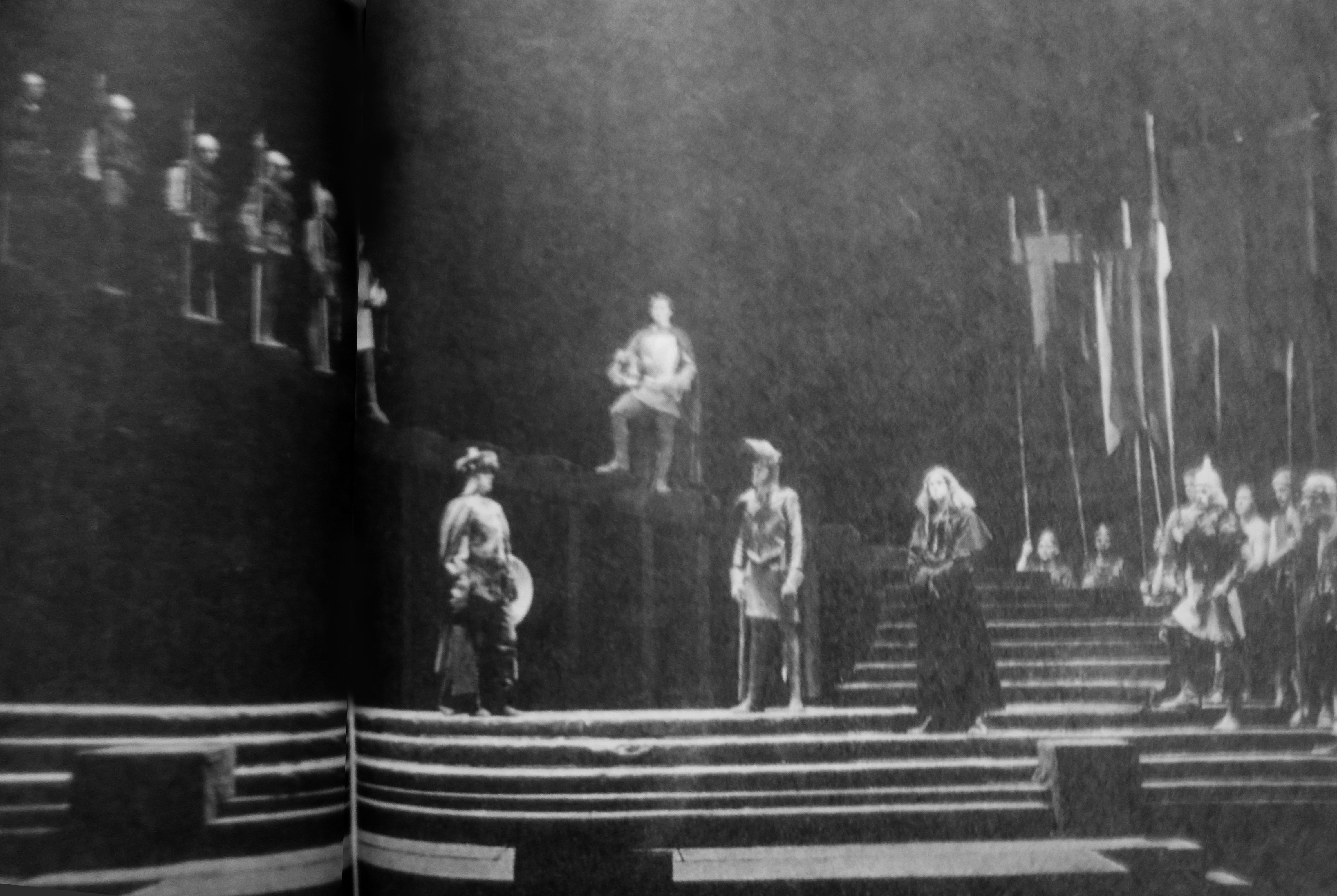 Yates wanted a taste of class, and thought Welles might be able to bring that to him. Olivier was making Hamlet, and as a result Welles thought that Macbeth might be a great, commercial film - comparing it to a cross between the Bride of Frankenstein and Wuthering Heights! To prepare for the film, Welles decided to stage a theatrical version of his script in Salt Lake City, Utah. Roddy MacDowell, Dan O'herlihy, Jeannette Nolan (a radio performer of long standing who had never appeared on any stage before) and others, would use this as a staged rehearsal for the film. 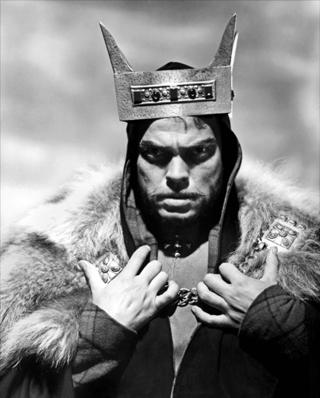 The set design as you can see, was very similar in layout to the set used for the "Voodoo Macbeth" production, and which would be duplicated in a stranger, primeval version on the Republic stages. It hosted a series of startling effects - bagpipers poured out of the darkness and into the theater - the witches appeared out of an explosive green flame - and huge, distorted puppet heads floated above them in the darkness. The usually staid Salt Lake City audience went wild. It ran for 4 days only as a special event - all the while sets were being built at Republic Studios for the soon-to-be filmed version. Welles soon got to film this Macbeth - on a limited budget and a limited schedule (23 days). The castle set seems to be designed to appear as if it was hewn out of the mountain side - not built up stone by stone. It's primitive (in more ways than one), wet, forbidding. It's a great idea, not fulfilled in my opinion by the actual appearance in the film - but the intention is quite good. It is also very similar spatially to the two previous stage designs. The film is an odd beast visually speaking - with the strangest mix of tartan and tartar costuming I have ever seen - in fact it seems vaguely influenced by Ivan the Terrible - the Serge Eisentein film. Many characters wear horned helmets - adding an odd Norse element to them (though of course the Vikings did not wear horned helmets), which was purposefully done by Welles himself. Some of this may be due to the low budget and many of the extras costumes being off the studio shelf, and what was available from Western Costumers. Roddy MacDowell wears a sort of Scottish fashion that wouldn't come into being for centuries, though it would have been accurate for another era altogether. Welles thought he was being authentic and had a crew do research into native Scottish costumes - however, watching the film, he clearly disregarded any results of that research in favor of what he had firmly in his head as appropriate. 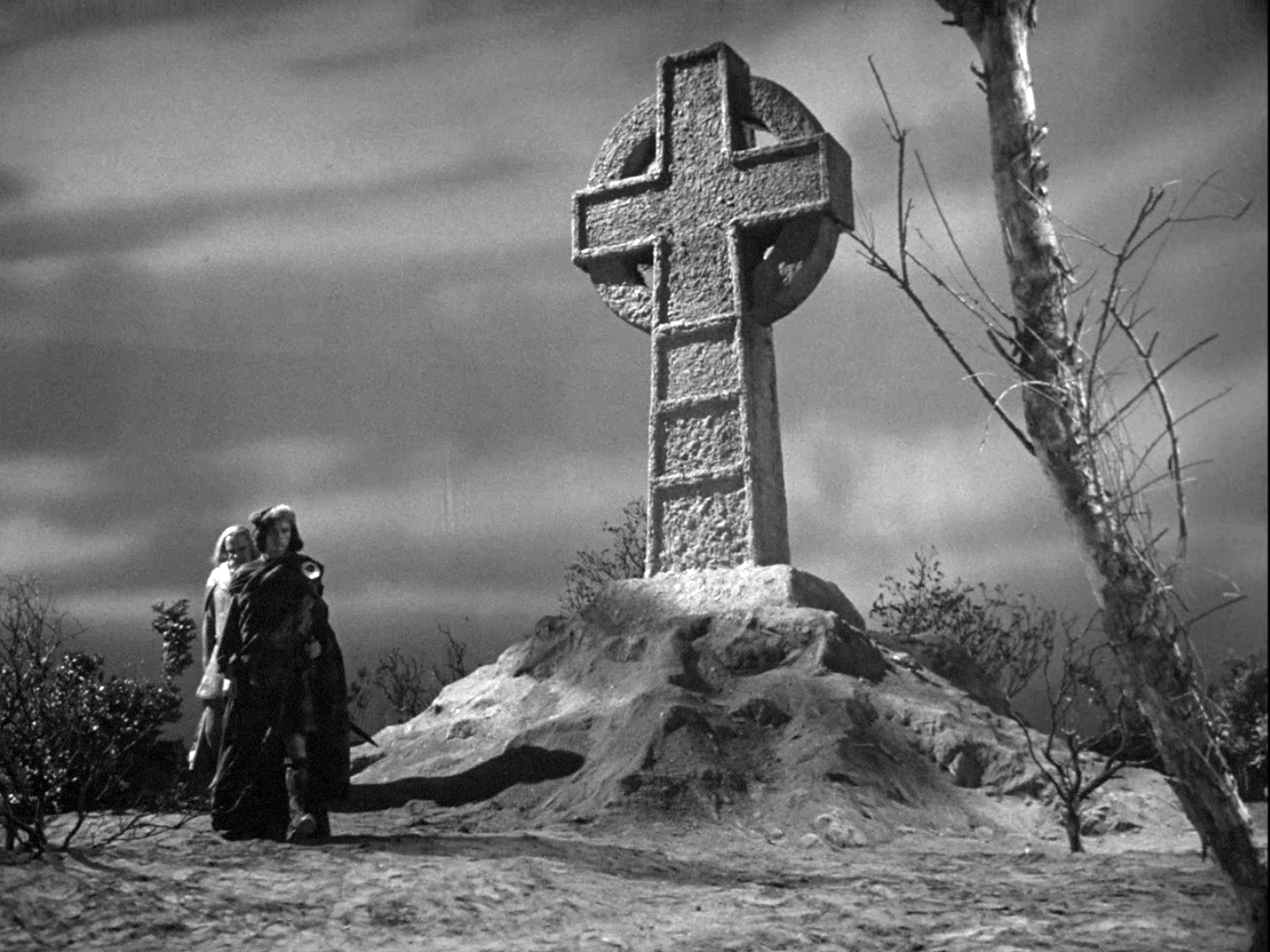
One aspect, brought over from Utah stage play, was the use of Scottish accents - possibly never done before when staging Macbeth - this also caused much favorable press, regardless if the accents were actually good and accurate. Welles, a master of sound techniques since his masterful days in radio, thought that by recording the entire script in advance, he could then play back the performances over loud-speakers and have the actors lip-sinc their performances! It was a crazy idea that he actually attempted on The Magnificent Ambersons - and quickly abandoned as the actors essentially revolted at the maddening and distracting concept. Welles thought they could just concentrate on the physical performance, without having to worry about diction, etc., and thought it would make for a much more sustainable performance within the peculiarities of the film process, where bits and pieces of film are put together. Good film actors know how to sustain and duplicate a performance with this in mind - but Welles didn't trust that. 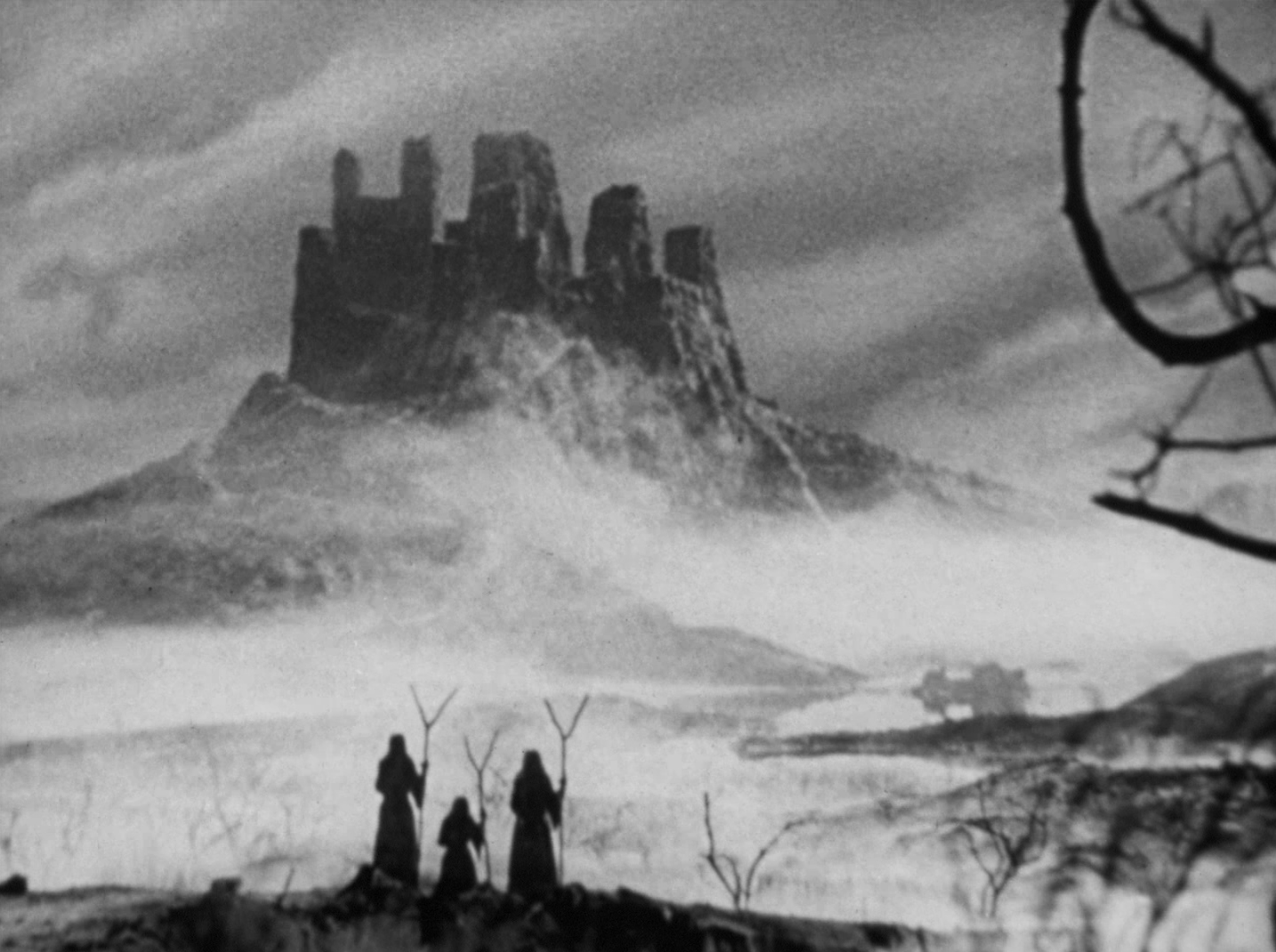
It was a disaster this time around as well - but not abandoned, sadly. The film suffers greatly from this - affecting the performances and indeed the liveliness of the sound. Any nuance that might have come from a new interpretation during a performance was now impossible. You can almost feel Jeanette Nolan's utter frustration and anguish on film. On the very first day of filming, everyone was against Welles - the crew thought him arrogant and privileged. But by the end of the first 16 hour day, everyone was on his side - as he had often done, he pushed and prodded the actors and crew to new heights, and they soon forgave his blustering. 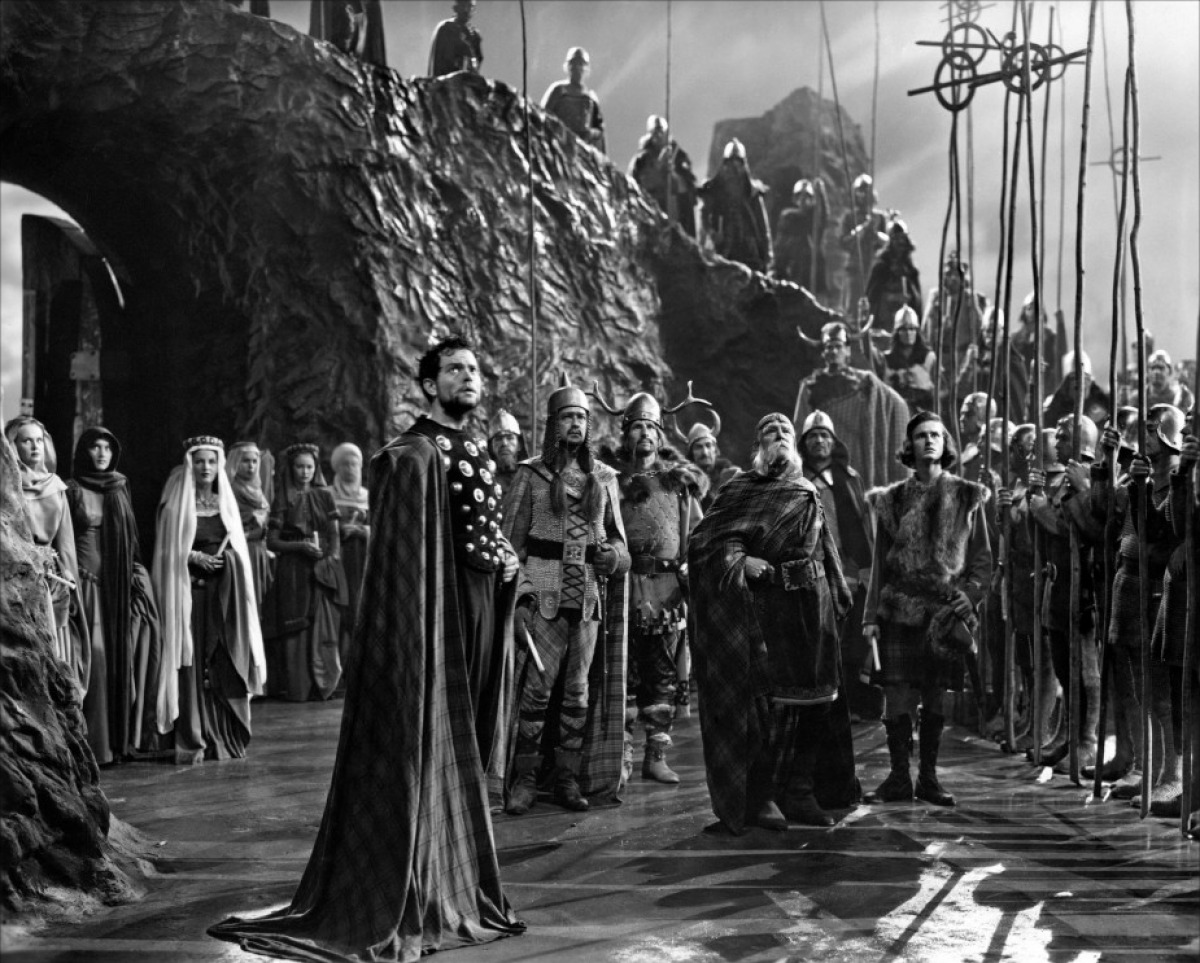
One trick he applied during filming of the battle scenes, was to have cameramen with hand-held cameras placed within the mob of extras - they were dressed in costume and had face-masks attached to the back of their heads to hide the fact that they were facing into the crowd while doing their work. One story, apparently true, is that Welles was dissatisfied with the mob's enthusiasm during the attack on Macbeth's castle. To prod them on to show some real energy, he put out long rows of lunch tables just the other side of the castle wall set - he rolled cameras, but instead of yelling "action", he yelled "lunch" - the resultant shots show a frenzied, excited mob racing towards the castle. It may be a made up story, but if you watch the film, there is one shot that fits this scenario all too well. 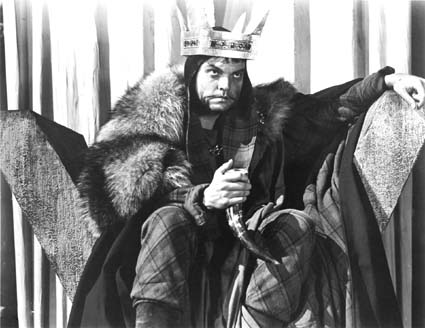
After filming was done, Welles, as he often and self destructively done in the past - ran away to other ventures - this time to Europe. He left the editing to someone else. As with Ambersons before, the final cut was nothing like he intended. Preview screenings were not good and the entire soundtrack re-recorded, replacing the Scottish accents with the more usual English and American ones. The film was also severely cut time-wise. The finished film was finally released in 1948, and Herbert Yates, unhappy with what he thought he had, made sure Welles wrote an opening narration to set the tone for a re-release in 1950. It didn't help. The film however has been restored to Welles' original intentions, but it's not the epic it might easily, and could have been. 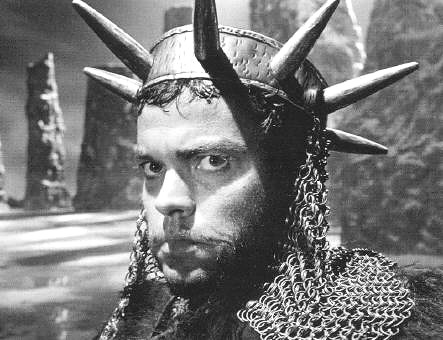
Trouble in the Glen - 1954 Welles next ventured into Scotland with an acting role in the film Trouble in the Glen Herbert Wilcox was a well known British film producer/director - making over 100 films in his long life-time. A kind and generous film-maker, none of his films however were of any special distinction - and Trouble in the Glen was no exception. In essence, it was engineered to try and catch some of the fame and glory of John Ford's Irish fantasy The Quiet Man. At least that's how Herbert Yates and his Republic Studios tried to present it - The Quiet Man being one of Republic's most prestigious and successful films. Indeed Trouble was based on a novel by the same author of The Quiet Man. In fact, posters in America emphasized Victor McLaglan's minor character over Welles (McLaglan was the co-star of the Irish film, with John Wayne), Forest Tucker, and everyone else. In Europe, where Welles reputation was enormous, he tended to be the object of the publicity. 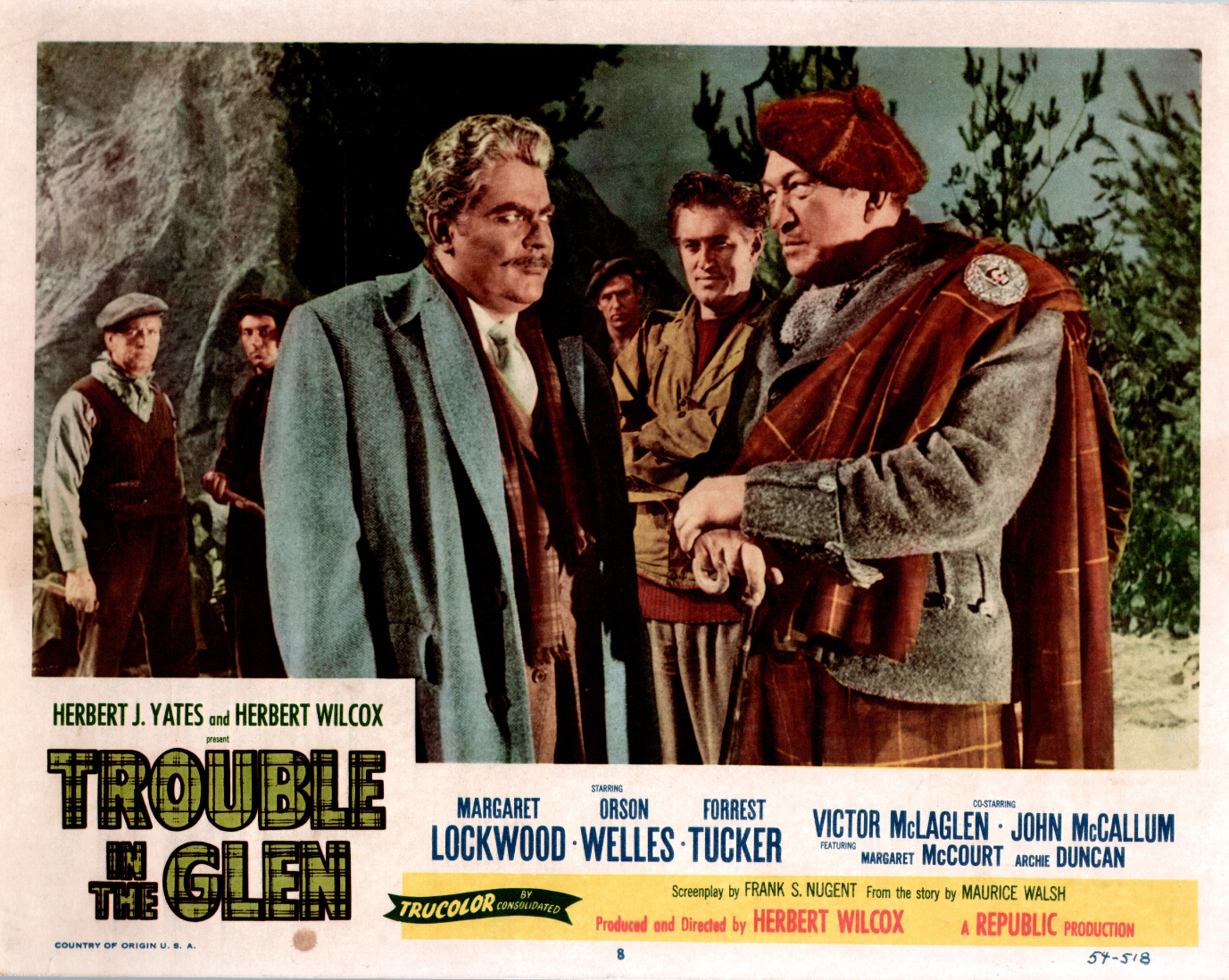 The simple plot concerns Forest Tucker, an ex US serviceman, returning to Scotland, where his true love (and sickly love child) reside. The real trouble in the glen is being caused by Orson Welle's rather peculiar Laird - he is not a Scot, but South American (his grandfather having once been laird)! His make-up is rather dense and swarthy, and though rife with some comic possibilities, Welles or Wilcox or the material just don't give any of this a light touch. There was much made of Welles wearing a size 50" kilt, and though he looks preposterous in full Highland gear, it is not because of his girth, but his rather crude make-up. It all has to do with the new Laird, closing an access road through his property, denying locals its use; his dislike of the weather and local customs, etc., etc. Though all ends happily, the film fails to capture the charm of its Celtic predecessor - and was not a success. Welles' adventures with things Scottish were not of the same vitality as his love for Ireland, or indeed Spain - both places where he lived and worked at various times in his life. Only his love of Shakespeare, and the possibilities of such a dramatic piece as MacBeth, allowed him to give much notice to the place.
Scotlands PeopleThis January the on-line resource for genealogical information, ScotlandsPeople, have released the images for births, marriages and deaths from 100, 75 and 50 years ago. Research your family statistics, where they were born, died, Coats of Arms......an so on. Discover some interesting Census Facts like: 41 people were 100 years of age and above (44 in 1891, 57 in 1881) !! |
